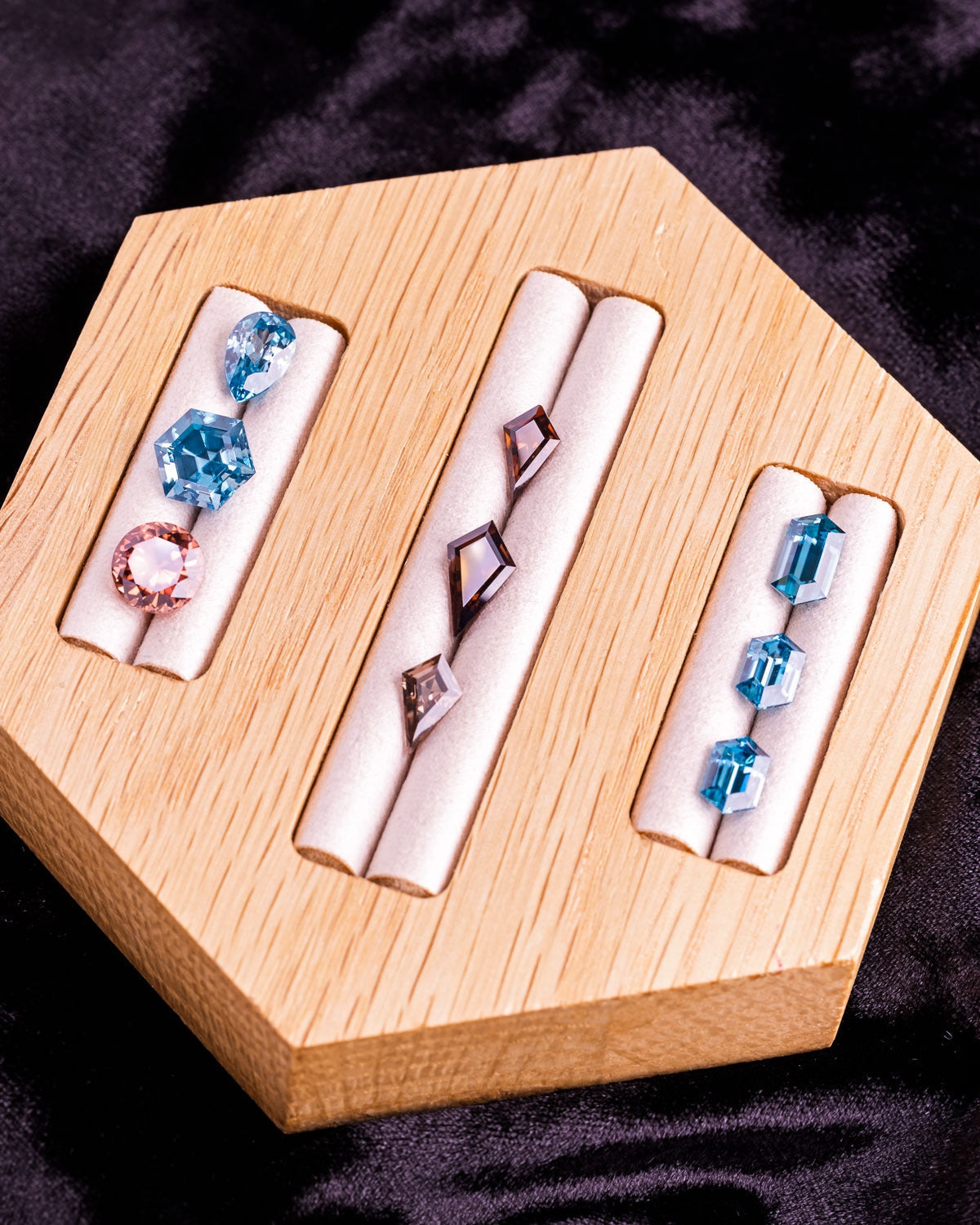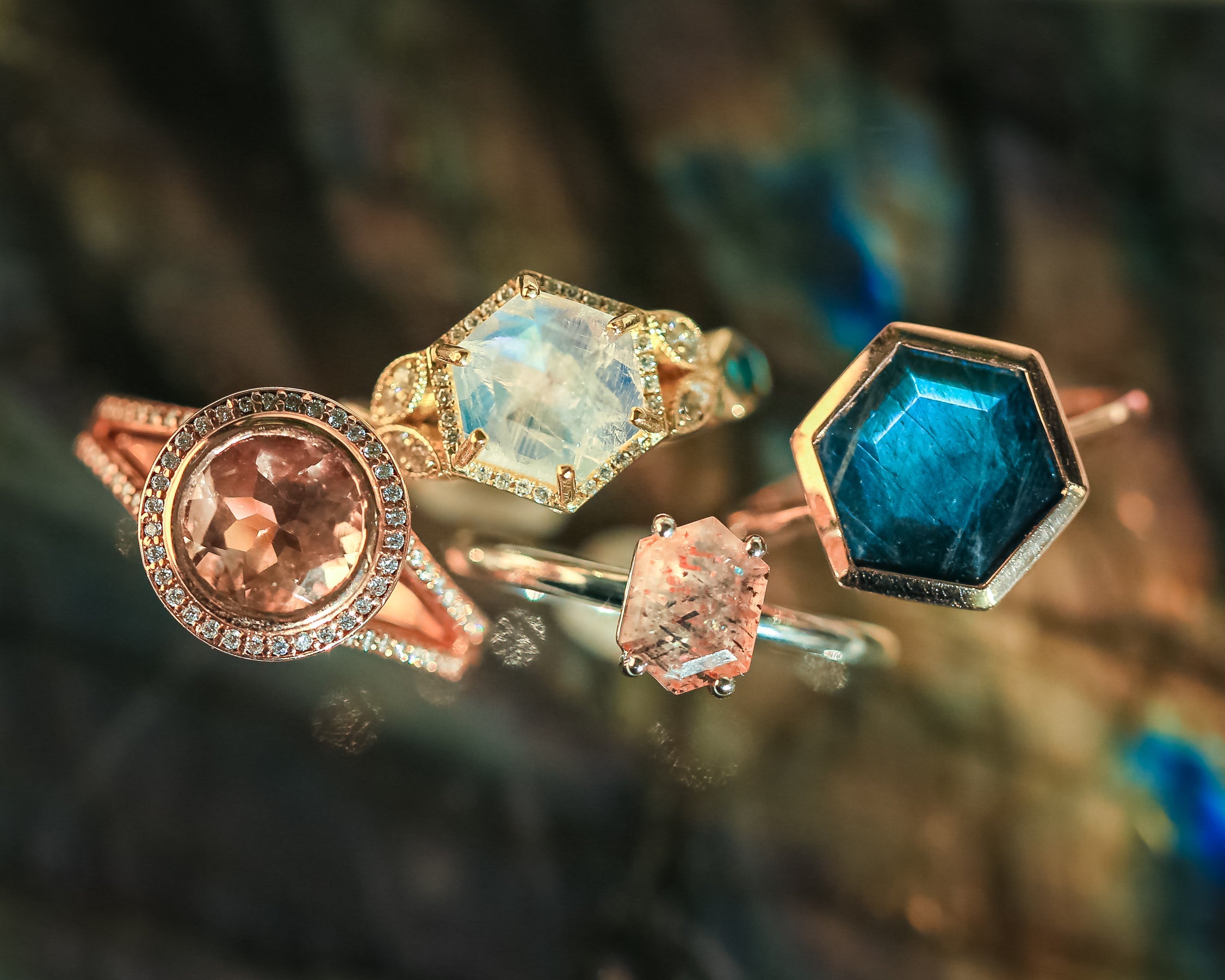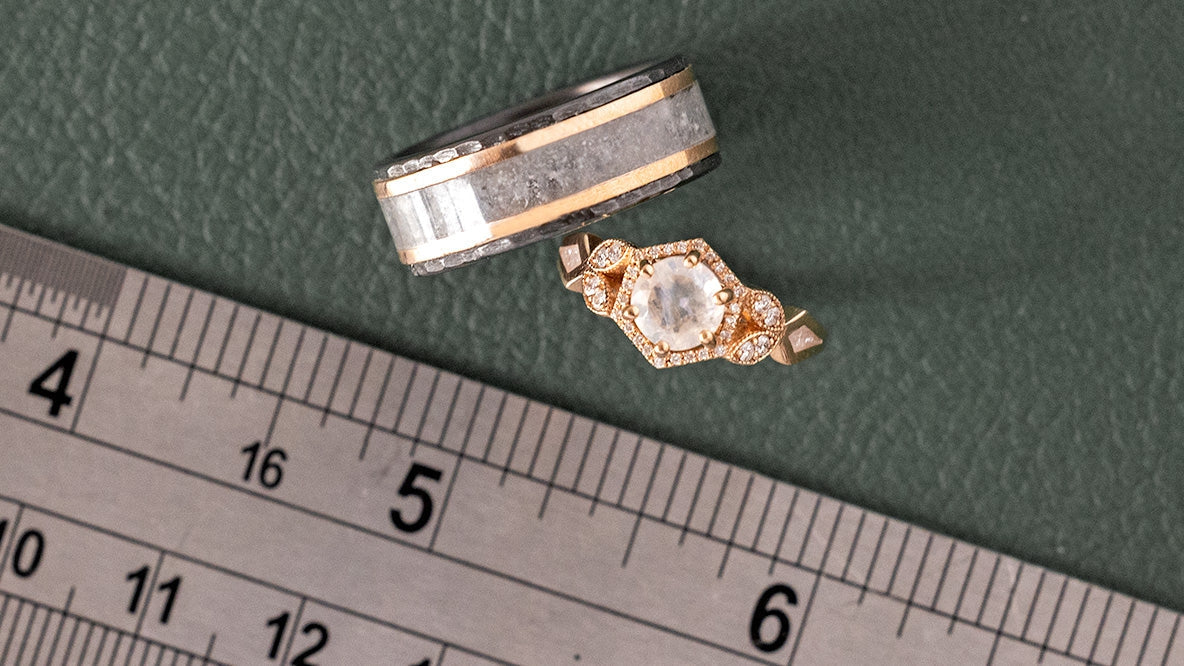
The Oldest Mineral On Earth: Everything You Need To Know About Zircon
Zircon, not to be confused with cubic zirconia, is a stunning natural gemstone known for its excellent brilliance and fire, variety of colors, and importance in science. Not only does it have a long history of lore, but it now serves as one of the December birthstones alongside turquoise and blue topaz. Zircon is the oldest mineral on the planet, and and it serves as a time capsule into the early events of of our planet. What better stone to represent your love than the stone that has withstood the test of time longer than any other!
Description & Sourcing
Zircon is made up of zirconium silicate, and comes in a wide variety of colors including colorless, yellow, blue, red, green, brown, and more. Certain color varieties even have their own names; for example, zircons with brown, red, & orangish tones are sometimes called "hyacinth zircons" while blue zircon is sometimes referred to as "starlite" and colorless zircon is called "Matara" or sometimes "Matara diamonds." These color variations are caused by trace amounts of elemental impurities within the stone, which can be stabilized, enhanced, or changed by heat treating the stone. Two of the most attractive properties of zircon are its double refraction and adamantine luster - which means it appears to have twice the amount of facets and fire within the stone as well as a diamond-like shine! The beautiful color combined with its desirable properties make zircon an eye-catching choice. With a very similar appearance to diamond, but with its wide variety of colors and economical price point, there's so much to love about this fascinating gemstone.

It is common for zircon crystals to contain trace amounts of radioactive uranium and thorium, but do not fear! These amounts are very small and do not pose a risk to health. Some zircons can actually have their crystal structure altered or destroyed by the radioactivity within them in a process called metamictization where the crystal irradiates itself, changing its properties. Most gem-quality zircons used in jewelry are classified as "high" zircons, meaning that there is little to no crystal structure damage in the stone. Incredibly, even the extensive damage in low zircons can be partially reversed with heat treatment, restoring some of the crystal structure. Because of these radioactive elements, some zircons actually fluoresce under UV light. These radioactive inclusions are actually a very useful tool for scientists, which we will discuss later.
Zircon comes from many places around the world including Cambodia, Australia, Sri Lanka, Thailand, and Myanmar. It is typically found as weathered pebbles in streams and alluvial deposits, sometimes alongside sapphires. Stones are sorted based on size and quality and sold either as gem-quality pieces or for industrial purposes. At Staghead Designs, we source our zircon gemstones ethically from various sources around the world.
Zircon is used in many everyday items such as ceramic tiles, granite countertops, abrasives, purification systems, fuel converters, and zirconium metal and is also commonly found in sand on beaches around the world, especially in Australia. It is also one of the December birthstones.
History & Lore
Zircon has a long history. Zircon has been used as a diamond simulant throughout history for its beauty, dispersion, and luster that rivals diamond. The name zircon is believed to come from the Persian word "zargun," which means gold-colored, or the Arabic word "zarkun," meaning vermilion. Unfortunately the name zircon is so close to cubic zirconia, that these two completely different stones are frequently confused for each other. In addition, both stones have been used as diamond simulants, creating even more confusion. However, zircon is a natural gemstone that is different than cubic zirconia and is a valuable and collectable stone, especially among savvy gemstone collectors.
The people of the Middle Ages believed zircon held special properties and that these stones could offer better sleep, promote prosperity, and increase wisdom among wearers. Hindu mythology tells of the Kalpa tree, also known as Kalpavriksha, which was a divine tree of life that fulfilled wishes. Sanskrit writings say that the leaves of the Kalpa tree were made of green zircon gemstones, and that this tree was the ultimate gift to the gods. Zircon is possibly one of the twelve gemstones of Israel mentioned in the Bible adorning Aaron's breastplate, however it is not 100% certain because the gemstone in this breastplate is named "jacinth," which is a fiery reddish-orange stone. Many sources believe this refers to the hyacinth variety of zircon.

The Victorian's of the 1880's loved blue zircon and it can be seen in estate jewelry from this time period, but they also used smoky zircons in their mourning jewelry. In the early 1900's, one of Tiffany's head gem buyers even advocated for zircon stones and tried marketing heated blue zircons under the name "starlite," but the name never stuck. In the 1920's, heat treatment of zircon stones became a regular practice, once again making the zircon a popular gemstone of the era. By the 1940's, zircon started becoming unfairly confused as a diamond imitation like cubic zirconia, causing it to lose some of its popularity. But as gem collectors and general jewelry lovers alike learn the differences between these stones, it has been and will continue to rise in popularity as a unique choice for engagement rings and other jewelry.
A Time Capsule Of Earth
Zircon is believed to be the oldest mineral on Earth - a specimen found in Australia was dated to be 4.4 billion years old! For comparison, the oldest diamonds are estimated to be around 3.2 billion years old. The elements found within zircon crystals are used for geochronology to help study the early years of our planet. In particular, it is the uranium that is found within some zircon crystals that allows us to gather this information. While carbon dating is a commonly-used method for dating, the half-life of carbon is very short (about 6,000 years) when compared to the 4.5 billion year half life of uranium. This combined with zircon's stability against chemical attacks and hardness has allowed it to survive billions of years of geologic events. In fact, like the rings of a tree, zircon can continue to grow around the original crystal creating rings that can host a lot of useful information for scientists including changes in temperature and pressure that are indicative of significant geological events. Zircon crystals are like small time capsules into the history of our planet! Zircon has even been found on the moon and is now being used to study the history of our Earth's moon. It is such an important part of studying the geologic history of our planet that geoscientists can even specialize in zirconology. Truly, this gemstone deserves far more recognition than it gets!
Zircon Care & Cleaning
Zircon ranks between 6 and 7.5 (fair to good) on the Moh's scale, but it does have a bit of a brittle tenacity and is better when set in protective ring settings. Always take precautions to avoid hard knocks or blows to your jewelry, and remove jewelry before participating in any activities that are rough on your hands. We recommend removing your ring for all manual labor (including sports, going to the gym, gripping items with force such as bicycle handlebars, luggage, etc.) and while doing household chores including washing dishes, laundry, and cleaning. Avoid contact with chemicals (such as chlorine and household bleach), extreme temperatures, perfumes, cosmetics, and other substances which may cause damage to your one-of-a-kind ring.
The color of zircon can be altered by prolonged and excessive exposure to bright light and UV light. Zircon jewelry should always be removed if you're getting your nails done, spending a day in harsh sun, or going to a tanning bed.
Warm soapy water and a soft brush is the safest way to clean zircon jewelry. Steam or ultrasonic cleaners are not recommended. Read our full Care Guidelines here.
Find or Design Your Custom Zircon Ring
From icy blue to chocolate to bronze, we offer several zircon stone options in the Staghead Mine that are sure to turn heads! Available in unique cuts like hexagon, kite, pear, and even round, the design possibilities are virtually endless.

Choose your stone from the Staghead Mine and one of our mountings from our custom ring collections or work with our artisans to design your own personalized ring! Whether your significant other has a December birthday, or just wants something unique and beautiful for a custom ring, zircon is a meaningful choice!



